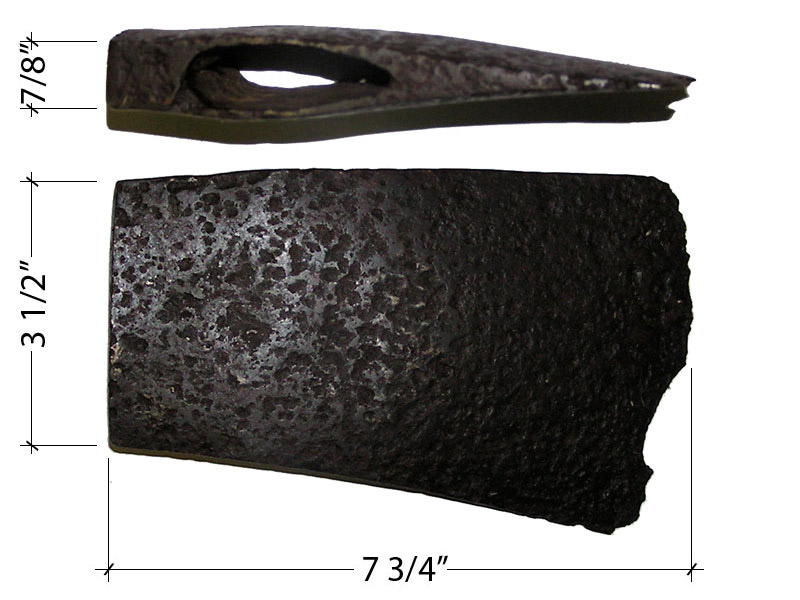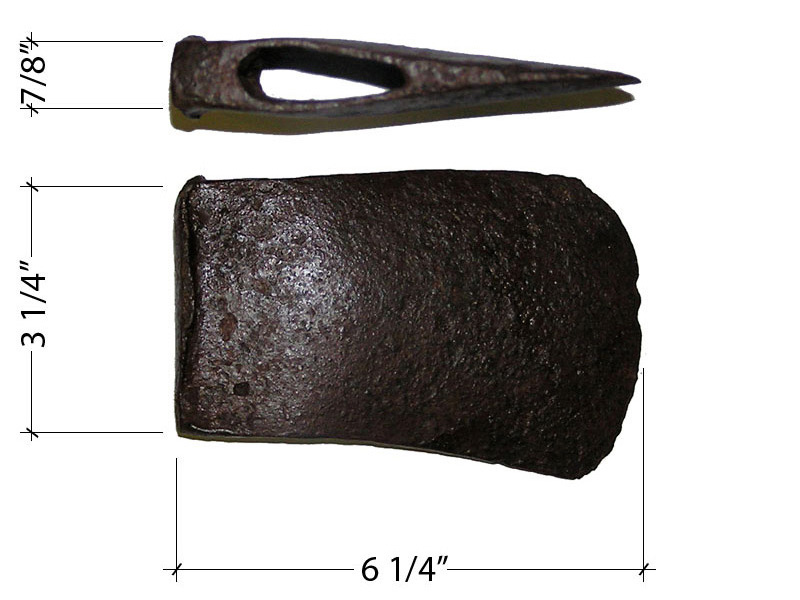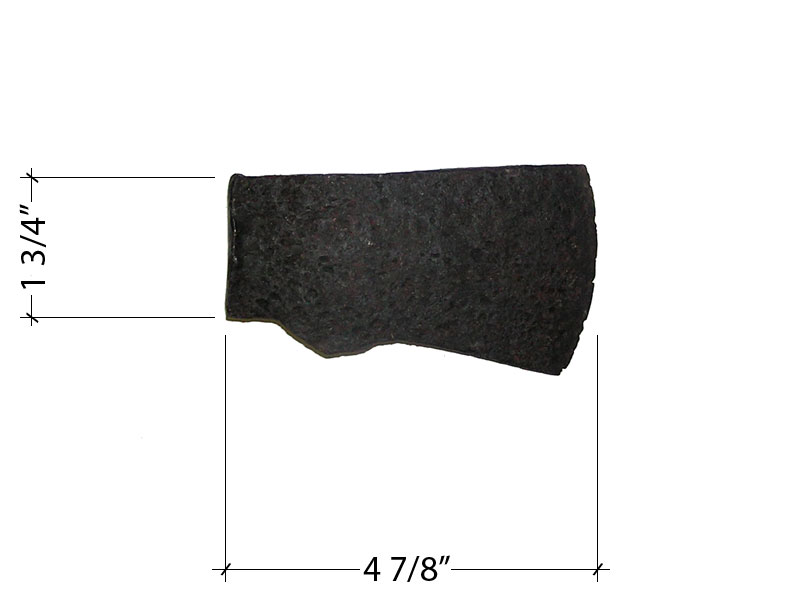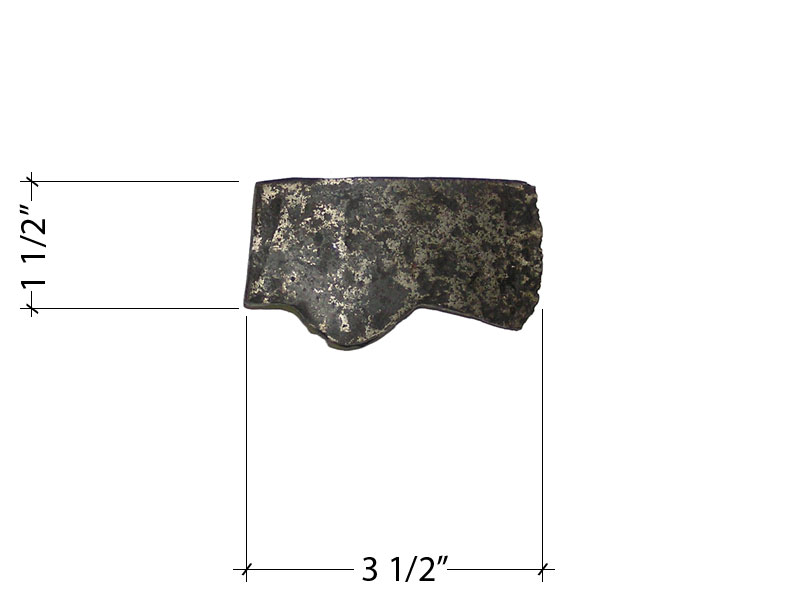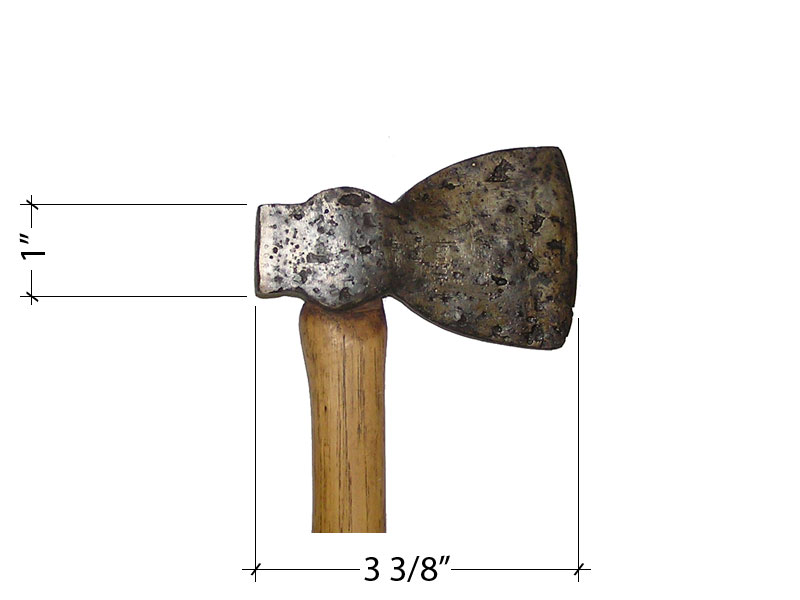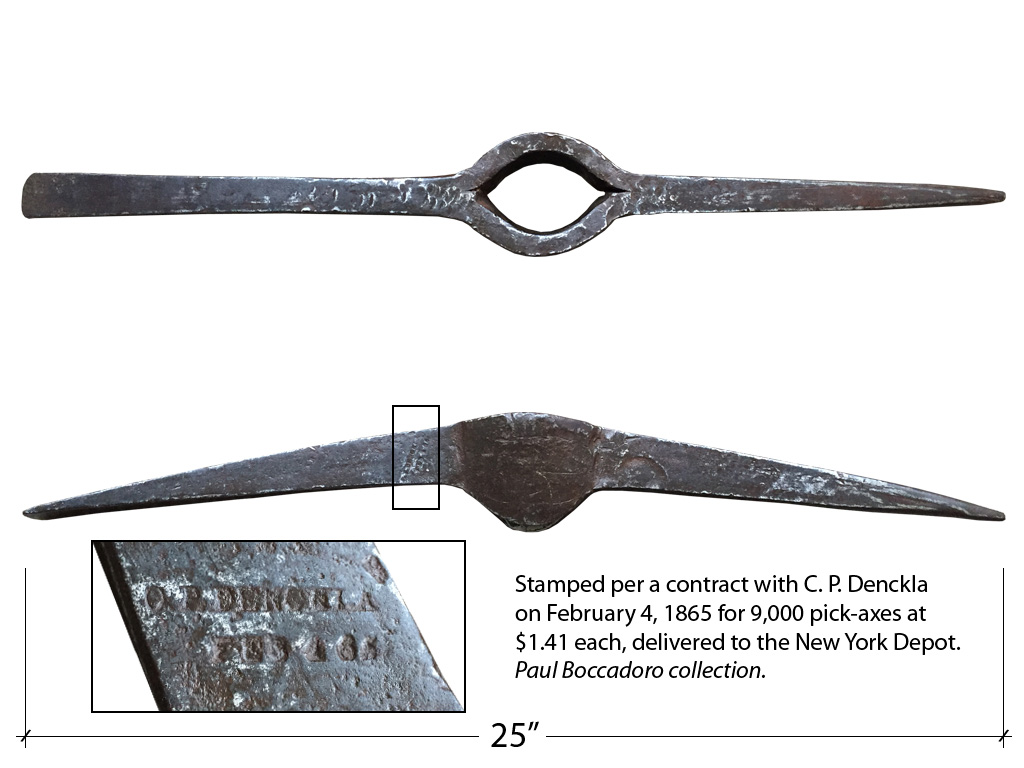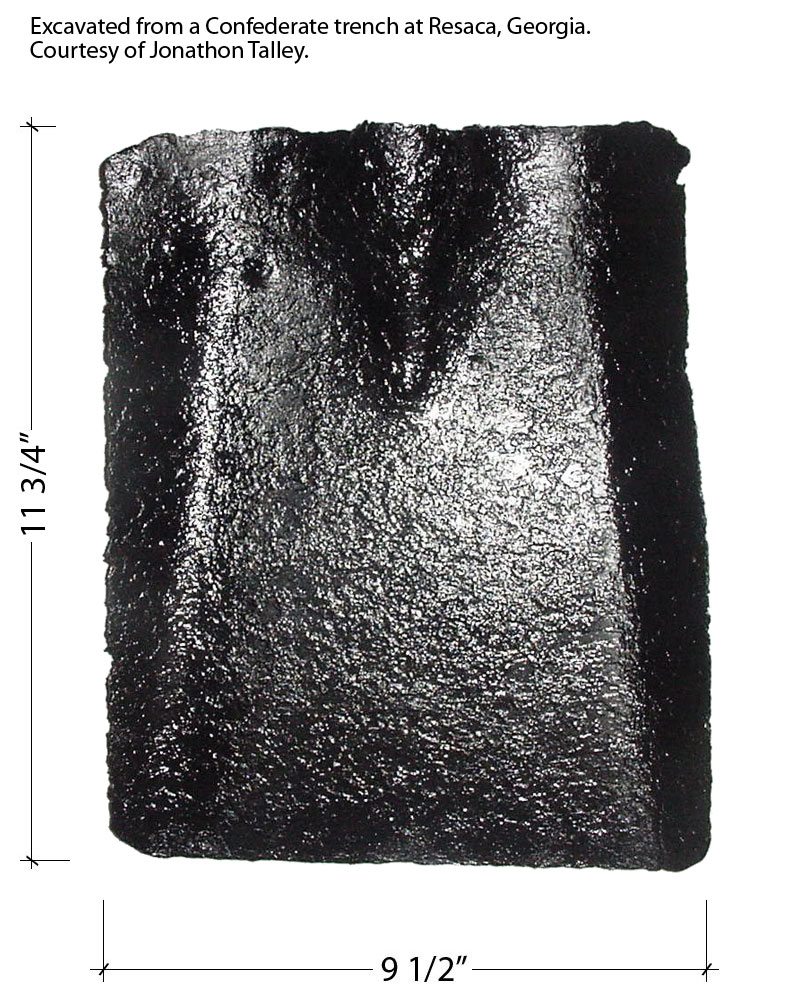Examination of Original Tools Excavated from Federal Camps
By Paul A. Boccadoro
During the harsh winter of 1862-3, the Federal Army of the Potomac encamped throughout Stafford County, Virginia. They built thousands of small log huts to endure the cold weather, and established an extensive military city that encompassed hundreds of acres of land.
When the army departed the camps in the spring of 1863, they left behind an immense amount of debris, including scores of commonly issued tools. Many of these relics were later excavated by 20th century historians seeking to document the camps and learn from the items left behind by Civil War troops.
This examination mostly focuses on dug issued tools found in the sites of Federal camps in Stafford County, Virginia, and the intention is to allow the viewer to be able to identify the types, sizes, and styles of tools issued to Federal troops at least during 1862-3. While these tools do not represent every single style used during the Federal army, it does provide an excellent cross section of the major styles in use. Unless otherwise noted, these items reside in the collection at White Oak Museum in Falmouth, Virginia, and were made available for study by D.P. Newton. Additional information for this article was provided by forester Aaron Cook. Also provided are the 1865 Quartermaster's Manual for each tool, but these only serve as a general guide; not only were the specifications published at the end of the war, but it is plainly seen that originals do slightly vary from them. Here is part of the collection of excavated Federal issue tools at White Oak Museum:
Felling Axes
1865 Quartermaster's Manual
"Felling axes, – to be of three sizes, and to be made of the best American iron and steel; blade to be well steeled to the edge; for medium sized axe, length of blade, 7 3/4 inches; width of pole 3 7/16 inches; thickness of pole, 7/8 of an inch; width on edge, 4 3/4 to 5 inches; size of eye 2 3/8 by 3/4 inches, oval in shape. The other sizes to correspond proportionally and with the above specifications, and to all average in weight 56 pounds to the dozen."
"Axe handles, – to be made of good, seasoned hickory wood, 34 to 36 inches long, and free from knots or shakes."
Notice the two major styles of axe heads excavated from the camps: the simple wedge (top row) which resembles a later New England style that was later called the "Yankee" style at the turn of the 20th century (USFS Axe Manual); and the wedge with the "axe lip" or "lug" (middle and bottom row) which gives more wood to metal contact, and an extra steady and durable fitting of the handle into the eye of the axe head (Gränsfors Bruks). Among all the varying sizes of axe heads excavated, this represents a fair cross section of the range of sizes.
Some of the heads studied show use as wedge or mallet by having a severely battered butt (such as the head at top right). Some axe heads were found to have the upper toe of the bit angled upward (such as the head at bottom right). Note that the original lengths of all heads could have been originally longer, but from continuous sharpening they may have been shortened. The first head in the middle row, dug from the camp of the 6th Maine, is the closest to its original shape.
There was an absence of double-bit axes in the collection of excavated artifacts, and none have been seen in original photographs of Civil War troops. The double-bit axe was invented in Pennsylvania by William Mann around 1850. By 1860, the double-bit axe was very common in the Northeast, but it appears that government contracts did not purchase this type, at least according to available photographic evidence and dug originals. Because its popularity was generally limited to the Northeast, it is doubtful the design was used extensively, if at all, in the South.
Hatchets
1865 Quartermaster's Manual
"Hatchets, – to be of the best American iron, steeled at the edge; 5 1/8 inches long; pole 1 7/8 inches long by 5/8 of an inch in thickness; eye oval, 1 1/2 by 3/8 of an inch in size; blade 2 3/4 inches on the edge; weight 18 ounces."
"Hatchet handles, – to be made of good, seasoned hickory wood, 14 inches long, and free from knots or shakes."
Again there seems to be two major style of hatchet heads: those of a wedge with additional handle support and those that appear more like small broad axes. Some appear to have been used as wedge tools, as evident by having battered butt ends (such as the hatchet in the top group, top left). Only one hatchet head was found to have a US stamp, as detailed on the hatchet in the top group. One carpenter's hatchet head was found with the more hammer-like butt and a nail puller on the heel, as shown in the bottom group. This handy style and variations on it were definitely in use because they also occasionally appear in photographs. The handles are reproductions fitted onto the original heads for display purposes, with the exception of the two non-excavated hatchets with original carved handles.
Pick-axes
1865 Quartermaster's Manual
"Pick-axes, – to be of two sizes, 23 and 25 inches long, made of the best American iron and steel, the eye in the center, to be 2 3/4 inches by 1 7/8 inches, outside, and inside, 2 1/2 by 1 5/8 inches in the clear; blade of the hoe end, 1 5/8 inches wide, and the pick end, a square point; each end to be steeled 4 inches and polished bright, without lacquer or paint; to weigh 6 1/4 to 6 1/2 pounds."
"Pick-axe handles, – should be made of good, seasoned hickory wood, 34 to 36 inches long, and free from knots or shakes."
Two styles of pick-axes were among the several originals in the collection: those with flat bottoms (such as the first head in the top row) and those more crescent-shaped (such as the second and third heads in the top row). An additional difference between the styles is the width of chiseled end, used for cutting through roots, where it is wider on the flat bottomed pick and more narrow on the crescent-shaped picks.
Spades
1865 Quartermaster's Manual
"Spades, – three sizes, Nos. 1, 2, and 3, made of the best American or Swedish bar iron, pointed with steel 5 inches deep from the cutting edge. No. 2, plain back, medium size; length of blade 11 3/4 inches; width at top 7 1/8 inches; width of edge, 6 7/8 inches; thickness of blade at top, No. 14 wire gauge; at edge and middle, No. 10 wire gauge; handle of ash wood, 2 feet 5 1/2 inches long, secured at top, "D," with 2 iron rivets, and in the socket of the blade with 3 iron rivets. Weight, 3 3/4 to 4 1/2 pounds."
Contrary to popular belief, not all spade heads of the period were constructed of two sections of metal connected with five rivets. While this method of construction was in practice by some manufacturers (seen on the spade at bottom left), there were many being produced with simpler methods, as seen in the top three examples. All examples feature additional small plates on the top edge for pushing the spade into the ground with a foot, and all taper half an inch down to the tip. The necks of spades are generally more straight when compared to a more curving neck as seen on shovels. The handles are antique but not original to the heads, and are fitted onto the original heads for display purposes.
Shovels
1865 Quartermaster's Manual
"Shovels, – three sizes, Nos. 1, 2, and 3; made of the best American or Swedish bar iron, pointed with steel 5 inches deep from the cutting edge. No. 2, medium size, plain back, with "D" handle; blade 11 1/2 inches long; 9 5/8 inches wide at the bottom, 8 5/8 inches wide at the top; handle of ash wood 2 feet 5 1/2 inches long, secured in the socket with 3 iron rivets; in top, through the "D," with 2 iron rivets. Weight 4 3/4 pounds."
The first three images show flat shovels, seen very often in original photographs. The first two heads show no rivets, while the third (excavated from a Confederate trench at Resaca, Georgia) does show riveted construction. According to the White Oak Museum curator, other similar heads have been found in winter huts with the front flat edge bent upward. It is hypothesized these heads were from broken shovels and implemented as skillets for use inside the fireboxes, as the necks would have provided excellent handles. Of course, this would have only been seen in permanent camps, because the weight of the shovel head would have simply been too much to carry on the march. The last image shows a different style of digging shovel. The head on this particular one also exhibits the five rivet construction seen on one of the spades above and one of the flat headed shovels. Note how much more the neck curves for leverage than the spades.
Additional Tools
Other tools such as these could have made their way into permanent camps. Only one mattock head was found, shown at left, and the broad axes could have been used for constructing huts or other buildings that required squared lumber. Broad axes may have been carried by Engineers, but it is doubtful they were used by standard troops or pioneers.





